Crowds of protesters gathered in cities and towns across the country Saturday to protest President Trump. And there are no signs of a breakthrough in ending the government shutdown.
(SOUNDBITE OF ARCHIVED RECORDING)
UNIDENTIFIED PROTESTERS: (Chanting) Whoa, whoa. Donald Trump has to go. Hey, hey. Wow, wow.
DON GONYEA, HOST:
Protesters in cities and towns across the country took to the streets yesterday to challenge the Trump administration. One of the people who attended a demonstration against the Kings here in Washington, DC, was Jane Campos (ph).
JANE CAMPOS: Well, I think we are at risk of losing our democracy and we really need to stand up and say enough is enough.
GONYEA: But Republican House Speaker Mike Johnson criticized the protests as a manifestation of hatred toward the United States. Joining us now to discuss the protests and more is NPR White House correspondent Danielle Kurtzleben. Good morning, Daniela.
DANIELLE KURTZLEBEN, BYLINE: Good morning, Don.
GONYEA: So how do you evaluate the importance of these demonstrations?
KURTZLEBEN: Well, they’re definitely important. I mean, first of all, they were huge. You saw these city blocks full of densely populated cities in New York, DC, Chicago. Some large protests were seen around the world and still considerable protests in smaller cities, suburbs and small towns.
But I also keep thinking about the coverage of the protests right after Trump was first inaugurated in 2017. We immediately had the Women’s March. There were those demonstrations at airports about immigration, demonstrations in favor of science. But everyone was separated.
This has been a slower build, but it’s like you’re seeing all that energy coming together in some kind of big protest movement. And furthermore, since Trump has gone further and faster with his agenda this time, these protests seem existential. It’s not about problems. As protesters keep saying, this is about democracy itself.
GONYEA: And the president, meanwhile, continues to give foreign policy top priority. He spoke by phone with Russian President Vladimir Putin last week before hosting Ukraine’s leader Volodymyr Zelenskyy at the White House. That was Friday. What would you say is the situation when it comes to those relationships?
KURTZLEBEN: Well, I’m very surprised how big events keep happening in this whole saga, and yet we haven’t seen President Trump make much progress. There was that disastrous meeting in the Oval Office earlier this year where Zelenskyy, Trump and Vice President Vance almost got into a shouting match. There was that meeting in Alaska with the Russian president on American soil. That was transcendental. And several foreign leaders came to the White House to talk peace this year. And then this week, this two-hour phone call with Putin and Zelenskyy visiting the White House. And yet, for all that fury, there just hasn’t been much movement.
GONYEA: Anything that came out of these last conversations?
KURTZLEBEN: Well, a big issue was these long-range Tomahawk missiles. Before that Thursday call with Putin, Trump had indicated that he could supply those missiles to Ukraine. But after that call, speaking with Zelenskyy, he seemed to have softened and said he hoped to end the war without those missiles. But now we have more important meetings coming up. Trump says he will meet with Putin soon in Budapest, Hungary, to discuss and end the war. And furthermore, the Secretary of State, Marco Rubio, says that before all that he will hold talks with the Russian Foreign Minister. But as we have seen, none of that means progress.
GONYEA: And finally, Danielle, it’s day 19 of the government shutdown. Any hint of an agreement?
KURTZLEBEN: No, in a word.
GONYEA: Okay.
KURTZLEBEN: On Capitol Hill, both Republicans and Democrats are entrenched, and Trump appears in no rush to fix things. He is using the shutdown to pick winners and losers within the government. He has said he is trying to hurt what he calls Democratic programs. And in the meantime, as some workers begin to go unpaid, he says he’ll make sure some (military, FBI, ICE) get paid.
Now, one more advance. The administration has been trying to make government-wide layoffs during the shutdown. They said they had planned for around 4,000 at one point. A U.S. district court judge issued a temporary restraining order that halted some of those layoffs. What happened was some unions representing government employees argued, look, you can’t just close programs because the funds run out, and the judge agreed with them.
But that restraining order only protects some employees. And that’s why, as of Friday, the Trump administration had only stopped work on a small portion of the layoffs. Now, meanwhile, White House Budget Director Russ Vought said layoffs could top 10,000. So this fight just isn’t going away.
GONYEA: That’s NPR White House correspondent Danielle Kurtzleben. Danielle, thank you, as always.
KURTZLEBEN: Thank you, Don.
Copyright © 2025 NPR. All rights reserved. Please visit the terms of use and permissions pages of our website at www.npr.org for more information.
The accuracy and availability of NPR transcripts may vary. The transcript text can be revised to correct errors or match updates to the audio. Audio on npr.org may be edited after its original broadcast or publication. The authorized record of NPR programming is the audio record.


